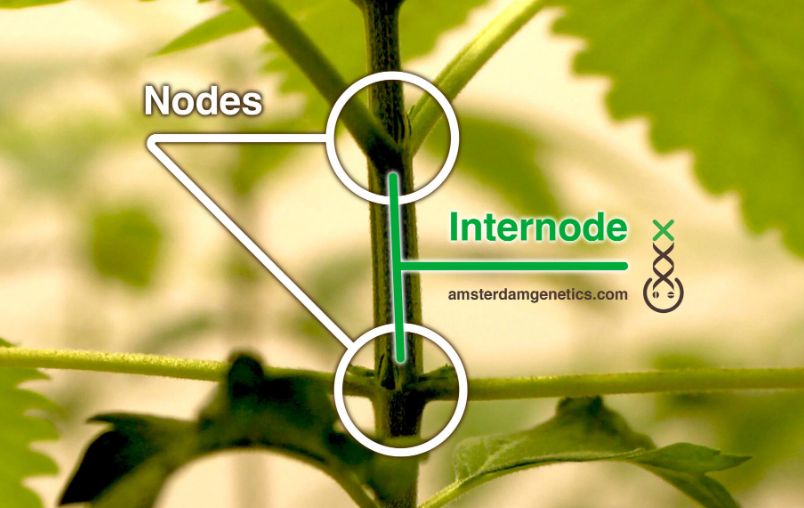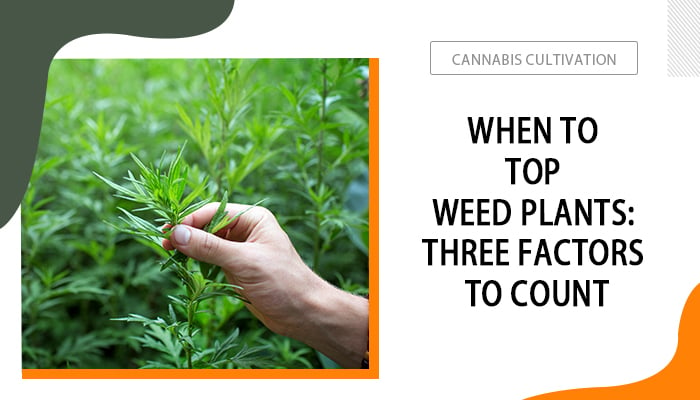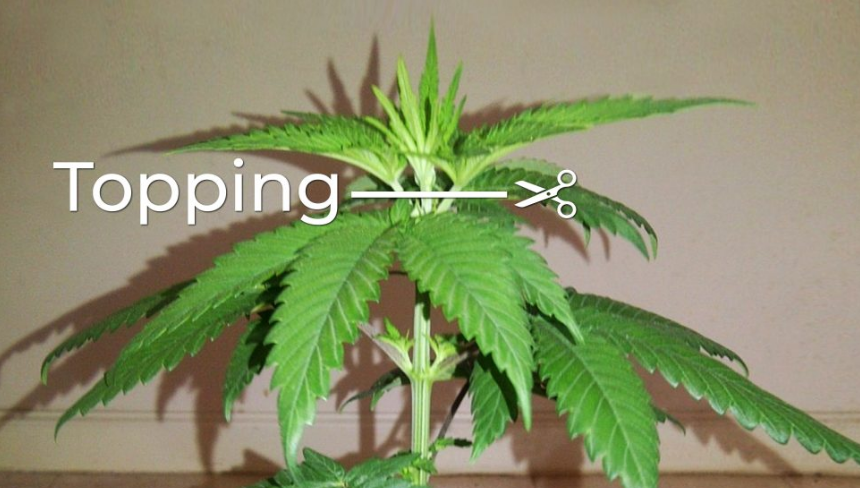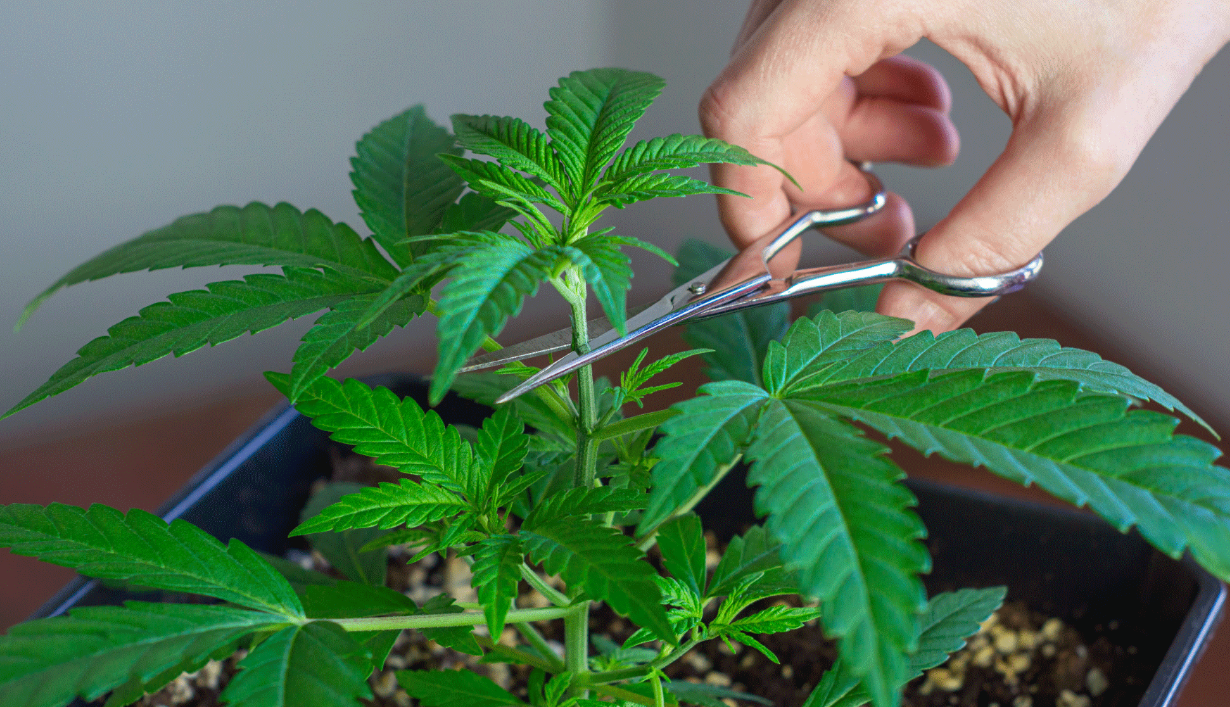When to Top Weed Plants for Better Yield [Solved]
Topping is a common practice of pruning the weed, where the top tip of a plant is cut off to force the plants to grow laterally instead of vertically. As a result, it ensures the lower nodes of your cannabis are also benefiting from an equal growth light distribution and sends vital energy out to them, all aiming to produce bigger and better yields.
However, timing is a crucial factor when it comes to topping. When to top weed plants? If done too early or too late, it can have negative effects on cannabis and even ruin it all. In this post, we will explore when to top a weed plant, why it's important to do so at the right time, and how to do it effectively.
Table of Contents
When to Top Weed Plants [Do It Only At the Right Time]
Topping is a traumatic experience for your weed and will cause stress to it. I’m sure you won’t want to top the weed while it’s fragile and vulnerable. So when is the time your weed is at its healthiest stage?
The stages of cannabis growth can be roughly divided into three phases, seedling, vegetative, and flowering. Among them, the vegetative stage, generally lasting 2-6 weeks, is when cannabis experiences rapid growth and also a comparatively ideal time to top your weed plants.
If the plant receives adequate light, ideal temperature and humidity, and well-balanced nutrients during the vegging phase, it can produce a strong and healthy structure with robust stems, healthy leaves, and a well-developed root system. And that’s when topping kicks in.
I know it sounds a bit vague, but when to top weed plants depends on a bunch of factors, not just the growth stage, but also the strain, soil condition, light penetration, and many other issues. So frankly speaking, there’s no perfect answer to when to top a weed plant. But if you want to make the whole thing more measurable, there are several signs you can count on.
Count the Nodes
One trick to identify if your weed is ready to get topped is by checking how many nodes the cannabis has grown. A node is a point of connection on the stem where branches emerge from the main stem and typically, weed plants develop nodes in pairs. Although the number of nodes during the vegging stage can vary in strains, generally speaking, when you notice 4 nodes, preferably 6-8 nodes emerging from the stem, you can go ahead and make the clean cut.
Not so familiar with a weed plant? Check to see what a marijuana plant looks like.

Count the Week
In case you don’t know, the seedling stage of the cannabis life cycle normally lasts 1 to 2 weeks. After that, it’s gradually moving to the vegging stage. However, it’s not advised to top your weed plants right in week 3, because cannabis at this time is still not robust enough to suffer from topping. As a result, they are not likely to make it alive. Week 4 might be a better timing for topping if everything is going on well.
Count the Height
This method is often used when you're growing multiple plants with varying growth rates, and you want to top them all at the same time when they reach the appropriate height, generally defined as around 6-8 inches tall.
One more thing to emphasize is that you should avoid topping your weed plants when it begins flowering. At this growth stage, most of the energy is focused on producing buds rather than lateral growth. Attempting to top the plants will possibly lead to a decrease in the number of buds as well as the quality of the yields.
Why Topping Weed Plants: Benefits of Topping
During the vegetative stage, cannabis plants focus on growing vertically by investing energy into the main stem. Ultimately, cannabis can look like a Christmas tree. However, topping cannabis plants redirects growth energy toward healing and causes the plant to produce multiple colas. By doing so, it brings the following benefits to your cannabis growth.
Increased Yield
By promoting the growth of multiple colas instead of a single dominant one, the plant is capable of producing more bud sites, which can result in a larger overall yield at harvest time. Additionally, by stopping the upward growth of the plant, topping encourages lateral growth, which can lead to a fuller, more bushy plant with more potential for bud production.
Better Light Penetration
We all understand the importance of lighting. Topping encourages the growth of lateral branches, which can help to fill out the canopy and improve light penetration throughout the plant.
Improved Air Circulation
When you top your weed plants, you create a more open and airy canopy, which can improve air circulation around the leaves and branches. This can significantly help to reduce the risk of mold or mildew growth.
Bonus: How to Top Weed Plants for Maximum Yields
Once you know when to top weed plants, you are probably wondering how to do it properly. Here is a detailed tutorial on how to top weed plants you can refer to.
Step 1. Locate the Right Spot
Identify the topmost growth tip, also known as the terminal bud, and locate the node directly beneath it.
Step 2. Prepare & Sterilize Your Equipment
Use a sharp, sterile pair of scissors or pruning shears to minimize the risk of infection. Meanwhile, prepare yourself with long sleeves and nitrile gloves to prevent sticky sap off the stem. A garage bag is also necessary to dispose of unwanted weed tips.
Step 3. Cut the Stem
Make a clean cut just above the node, removing the entire top portion of the plant. If you are not sure how long to cut, a general rule of thumb is to top the plant by removing about 20-30% of its height. Make sure to leave enough stem to allow for recovery and regrowth.
The angle also matters. To encourage rapid healing and prevent water from accumulating on the cut surface, it is recommended to prune branches at a 45-degree angle.
Step 4. Monitor the Weed
After topping, you should observe the plant carefully for signs of stress or damage. The plant may appear wilted or droopy at first, but this should resolve within a few days. More importantly, provide your plant with plenty of light, water, and nutrients to encourage recovery and regrowth. After a week or two, new growth should emerge from the node just below the topping point.
Verdict on When to Top Weed Plants
Topping weed plants is an effective way of pruning to increase yield. When it comes to when to top weed plants, it’s commonly suggested to top your cannabis during the vegetative stage when you can clearly see at least 4 nodes grown on the main stem. By removing the tip of the stem, you alter the energy distribution and make it possible to serve for lateral growth, therefore producing more buds and yields.
FAQs about When to Top Weed Plants
- What week should you top plants?
The optimal time to top cannabis is during the vegetative stage, which can be around 3-4 weeks after planting for indoor plants, or a few weeks after the last frost for outdoor plants. However, week 4 might be a safer bet since it’s still a little risky to top cannabis in week 3.
- When to top weed plant a second time?
After first topping a cannabis plant, it is recommended to wait until the plant has fully recovered and new growth has emerged before considering a second round of topping. This can take anywhere from 1-3 weeks depending on the strain and growing conditions.
- When is it too late to top a weed plant?
Once the plant has entered the flowering stage, it is generally too late to top it, as the plant's energy at this phase is primarily focused on producing buds rather than growing new branches. Topping a plant during the flowering stage can cause stress and reduce overall yield.
- Does topping increase yield?
Yes, topping a weed plant can increase its overall yield by promoting the growth of multiple colas. When you top a plant, the energy that it would have used for vertical growth is instead redirected towards producing lateral growth and additional colas, resulting in a more bushy and fuller plant and ultimately leading to a higher yield at harvest.
- How often should you top feed your weed?
The frequency of topping cannabis plants depends on several factors, such as the growing medium, plant size, and stage of growth. In general, it is recommended to top feed plants every other watering or every third watering, depending on the nutrient requirements of the plant.







Ok so I am not clear…you say do not top once plant has entered flowering. I’m just now seeing my first pistols is it too late to top for my clones?
I think you should be a little more detailed in your example. Some do not consider first signs of pistols being time entered “flowering stage” it’s generally considered first 2 weeks “entering” flowering stage but not in it, this is the transition stage and wondering if it’s ok to top.
Hi Justin,
Thanks for your advice. I did forget to mention the pre-flowering stage in this post. Regarding your question, how many nodes do you have now? Compared with the growth stage, counting nodes is a safer way to top weed the plants.